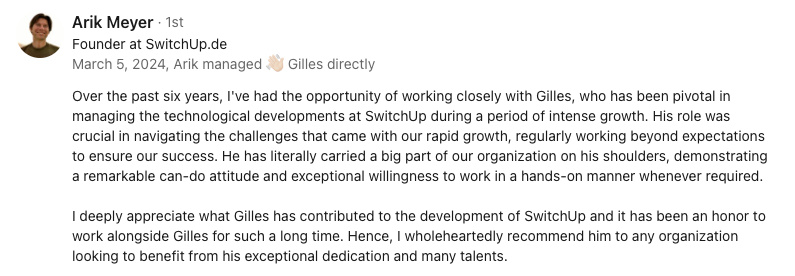Abstract:
The field of genomics is rapidly advancing, promising groundbreaking transformations in healthcare, agriculture, and environmental conservation. With the advent of CRISPR and other gene editing technologies, scientists are now able to make precise alterations to the DNA of living organisms, paving the way for innovative treatments for genetic disorders, enhanced agricultural crops, and novel approaches to combating climate change. This article explores the latest developments in genomic technologies, their potential applications, and the ethical considerations they raise. Professionals in the tech industry, especially those in leadership roles, will find valuable insights into how these advancements could influence future projects and strategic decisions. Understanding the power and potential of genomics is crucial for steering the direction of research and development in a way that maximizes benefits for society while navigating the complex ethical landscape that accompanies such transformative technologies.
A Glimpse into the Transformative Power of Genomic Advances
Picture the future of medicine, whereby a simple genetic tweak not only extends human lifespan but also eradicates inherited diseases. It might sound like science fiction, but this is the revolutionary potential that genomic advances are poised to realize. Groundbreaking technologies like CRISPR and other gene editing tools are reshaping landscapes across healthcare, agriculture, and environmental science. Apart from mitigating chronic ailments, these advances trailblaze paths for drought-resistant crops and bioengineered animals, outlining a narrative not just of survival, but prosperity.
This promising horizon owes much of its glitter to innovative strides in gene editing. Despite being a relatively fresh face in the scientific community, CRISPR has already made headlines for its precision and affordability, making once unthinkable genetic modifications accessible. The promise extends beyond human health, with CRISPR's applications suggesting potential solutions to ecological challenges and food scarcity by tweaking the very building blocks of nature. As we delve deeper into the genetic playbook, the script of our everyday lives gets poised for a rewrite, potentially birthing a novel era of biotechnological achievement.
As awe-inspiring as it sounds, this genomic venture is not just about turning the impossible into the possible; it is about remapping the boundaries of science with each genetic sequence decoded. The exploration into this dynamic field is not merely academic—it's a sprint toward a horizon lined with the elixirs of enhanced existence.
Exploring the Potential Applications of Genomic Technologies
Revolutionizing Health: The Medical Marvels of Gene Editing
Step into the future where the mending of genetic disorders is not only a reality but a common medical practice. Advances in genomic technologies, particularly the gene-editing prowess of tools like CRISPR, are paving the way for therapies that target the genetic roots of diseases. For instance, researchers are currently exploring how this technology could potentially cure sickle cell anemia by correcting the defective gene responsible for the disease, offering a lifelong solution instead of mere management of symptoms.
Moreover, the fight against hereditary conditions such as cystic fibrosis and Huntington’s disease is witnessing an exhilarating shift from symptomatic treatments to potential comprehensive cures. The heartening progress includes recent trails where gene editing has strategically disabled certain genetic pathways linked to aggressive forms of cancer, promising a future where cancer could be turned off like a malfunctioning alarm clock.
Agricultural Advancements: Feeding the Future
In the realm of agriculture, gene editing is not just knocking on the door but kicking it down with flair. By editing the DNA of crops to enhance their drought resistance and increase yield, genomic technologies are set to dramatically transform the way we grow food. A poignant example is the development of rice varieties with enhanced photosynthesis abilities, which could significantly boost productivity and thus, feed more mouths in regions battling the harsh realities of climate change.
Beyond the grains, the application extends to livestock where genetic tweaks are improving animal health and productivity. Researchers have engineered pigs resistant to swine flu, which could potentially save millions in losses each year. The ripple effect of such advancements promises a more sustainable and efficient agricultural sector, and perhaps, one day, meat that’s lab-grown with the genetic signature of your choice: say, prime steak without the ecological hoofprint?
Addressing Climate Change Through Genius Genetic Interventions
Genomics marches onto the environmental stage with potential solutions tucked under its microscopic arm. Altered microorganisms are being designed to absorb more carbon dioxide, and gene-edited coral species are being developed to withstand warming seas. These initiatives spotlight the role of genomics not just in mitigation but in the reclamation and proactive management of our ecosystems.
Planting the seeds of change further, gene-editing technologies like CRISPR are being utilized to create 'super trees' that grow faster and sequester more carbon than their natural counterparts. Imagine forests not just rebounding but thriving in the face of climate change, acting as colossal green lungs for the planet.
The Broader Impact: Weaving Innovation into the Fabric of Daily Life
The broad-reaching impacts of genomic advances seep into everyday life, transforming what was once perceived as mundane into marvels of innovation. Whether it’s in the clothes that can react to environmental stimuli or bioengineered bacteria in our homes that help digest waste more efficiently, the ripple effects of these technologies are both profound and pervasive.
Concluding thoughts often converge on the marvel that is genomic technology. The real value lies not merely in its ability to rewrite the genetic code of living beings but in fostering an era where human ingenuity harmonizes with the rhythm of natural life. Current research projects, amplifying this transformative potential, constantly push boundaries and challenge the very essence of biological possibilities.
By intertwining detailed studies, expert insights, and incessant curiosity, the exploration of genomic technologies continues to cast light on paths once shadowed by doubt and uncertainty. This journey, embroidered with the threads of potential and ethical considerations, not only sketches a glimpse of a promising horizon but also anchors hope in the tangible benefits that these innovations are poised to deliver.
Ethical Considerations and Future Outlook
The Ethical Maze of Genomic Technologies
The dazzling promises of genomic technologies carry with them a complex ethical burden that oscillates between innovation and intrusion. As medical breakthroughs like gene editing inch closer to common practice, society must grapple with pressing concerns like the morality of altering human genetics. Are we playing nature's role, and if so, at what cost? Debates intensify around designer babies, fear of eugenics, and disparities in access to these cutting-edge treatments across different sections of society.
Furthermore, altering the genetic makeup of crops and livestock ushers discussions about long-term impacts on biodiversity and ecosystem balance. Critics argue that despite robust opportunities for problem-solving, the potential for unforeseen consequences remains high. Striking a balance between the boon of genetic correction and the banes of its overreach presents one of the foremost ethical dilemmas facing researchers and policymakers today.
Future Visions: Ethical Leadership in Genomic Innovation
As we consider the horizon filled with genetic possibilities, leadership within tech sectors assumes a pivotal role in steering the ethical compass of genomic research. This consideration extends beyond legality and compliance; it involves cultivating a culture of responsibility and ethical foresight. Executives and scientists alike are tasked with envisioning a world where technology serves humanity without overshadowing it. This includes:
- Promoting transparent research practices that include public dialogue and education to demystify genomic technologies.
- Ensuring equitable access to genomic advancements to prevent a genetic divide.
- Protecting individual privacy in an age where genetic information could become a currency.
These steps affirm the commitment to ethical stewardship as an integral part of innovation. It's about creating solutions that respect both individual rights and collective welfare, crafting a future where everyone can benefit from scientific breakthroughs without sacrificing societal principles.
Lighting the Path Forward: Innovating with Integrity
Embarking on the future with genomic technologies at our side necessitates a nuanced approach to both opportunities and obstacles. As we transition more of these scientific achievements from lab to life, the role of ethics will only burgeon in importance. Leaders across industries play an irreplaceable role by prioritizing innovations that honor our deepest values as a society.
For tech giants and startups alike, the pulse of governance will have to measure its beat by the rhythm of ethical innovation. These entities will craft the frameworks that could define the usability, distribution, and oversight of gene-editing technologies, ensuring they enrich rather than encroach upon human experience. Excitingly, this future holds not just a promise of tackling diseases but also ethical growth, ensuring that as we alter genes, we retain the essence of humanity unhindered by our own creations.
Final Reflections: Ethics at the Core of Tomorrow
As we stride boldly into a genetically tailored future, ethical considerations beckon us to pivot and reconsider: to what extent should we mold the fabric of life itself? With each genetic barcode we rewrite, let's also reaffirm our commitment to the moral codes underpinning scientific inquiry. Marvel at the prowess of genomic technologies, but stay vigilant about the ethical scaffolding that must accompany scientific quests. This is not merely about adjusting genomes; it's about adjusting our perspectives and policies to safeguard the continuum of human values amidst a surge of scientific marvels. The true success of genomic advancements will be measured not just in the ailments they alleviate but in the integrity and inclusiveness of their application.
You might be interested by these articles:
- Genomic Editing Techniques
- Revolutionizing Medicine with Genomic Innovations
- Genomics: A New Hope for Europe's Environmental Future





